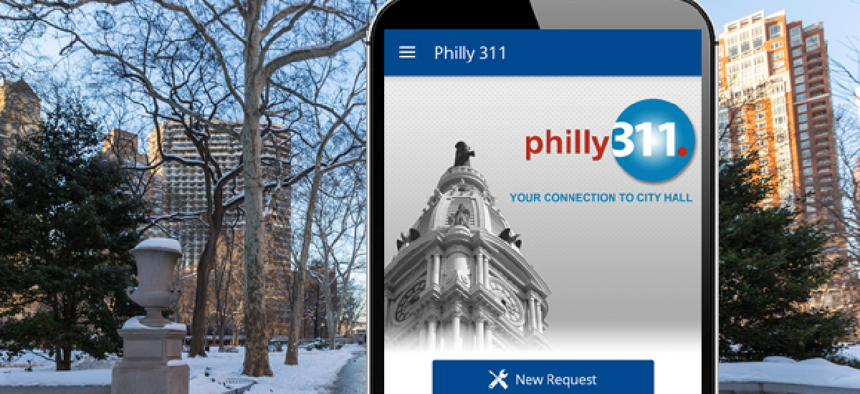Philly 311 gets a makeover


Connecting state and local government leaders
Philly 311, Philadelphia’s mobile app for access to government information and non-emergency services, has been evolving to be easier to use and more responsive to unexpected events.
Philly 311, Philadelphia’s mobile application for access to government information and non-emergency services, continues to evolve to make the application easier to use and more responsive to unexpected events.
“Over the past two years we redesigned the app twice in order to remove friction in the request process,” said Ryan Chan, a product manager for Accela, a government cloud solution provider that has joined the Philly 311 team.
One improvement involved breaking the process of making a service request into smaller pieces. In the past, the request type, location and description of the problem were all on one page, which discouraged users from completing the request process, Chan said.
“The old form was just one page, and it was very overwhelming. Ultimately the residents would abandon the form and just wouldn’t submit their request,” Chan said. Philly 311 uses a Salesforce customer relationship management system, which gave the team a fair amount of flexibility in modifying the process. “By presenting these forms incrementally, it’s really encouraged residents to take control of the app. The changes we made increased submission rate by over 50 percent.”
The new request format went live in late January.
Tim Thornton, who became Philly 311’s director that same month, had less than a week to get himself acclimated before 30 inches of snow fell on Philadelphia. However, the city was ready with a new Philly 311 option for requests related to the storm.
Sheryl Johnson, Philly 311’s operations manager, said the city started getting things ready a few days before the storm to ensure snow-related service requests could be delivered as smoothly as possible.
After the snow, more than 8,000 service requests were made via the Accela-powered mobile app and website related to plowing, frozen traffic signals, fallen trees and debris, towed vehicles and sidewalks that were not shoveled by home and business owners. Thornton said he was pleasantly surprised by the way the system worked and how organized operators were at receiving and sending out requests.
“It was a big storm, but we had no real issue,” Thornton said. “It was a real confidence boost to see the team working hard all weekend with service requests and working together. We handled everything quickly and efficiently.”
The Philly 311 app can adapted to handle other emergencies as well. It has special features for heatwaves and other non-weather related emergencies where citizens can make requests or get information on where they can go for help and safety.
Philly 311 has been iterating at a fairly rapid pace since 2014, when the city finally found funding to restart development that had been essentially frozen for six years. The project won a GCN Award in 2015 for those efforts. And Thornton, now that he’s had time to get himself adjusted, is looking at other cities' services for ideas on how to continue making Philly 311 a better application.
“We have the ability to get a lot more citizens engaged with our app,” Thornton said, “so we’ll be investigating new ideas in the future.”




